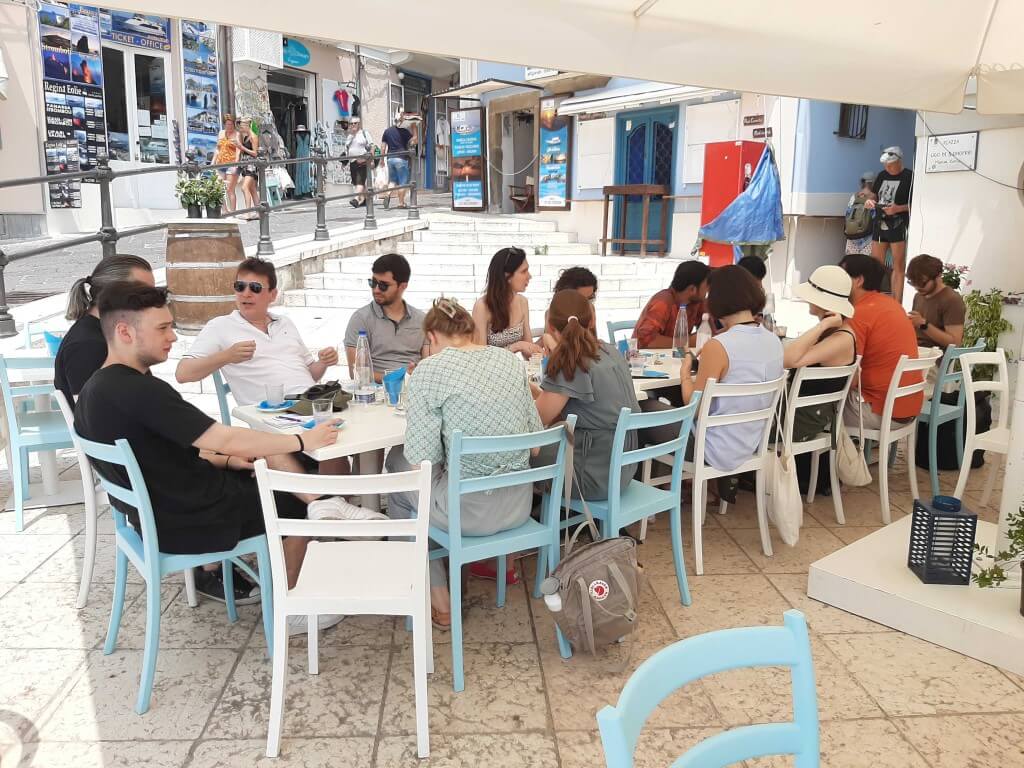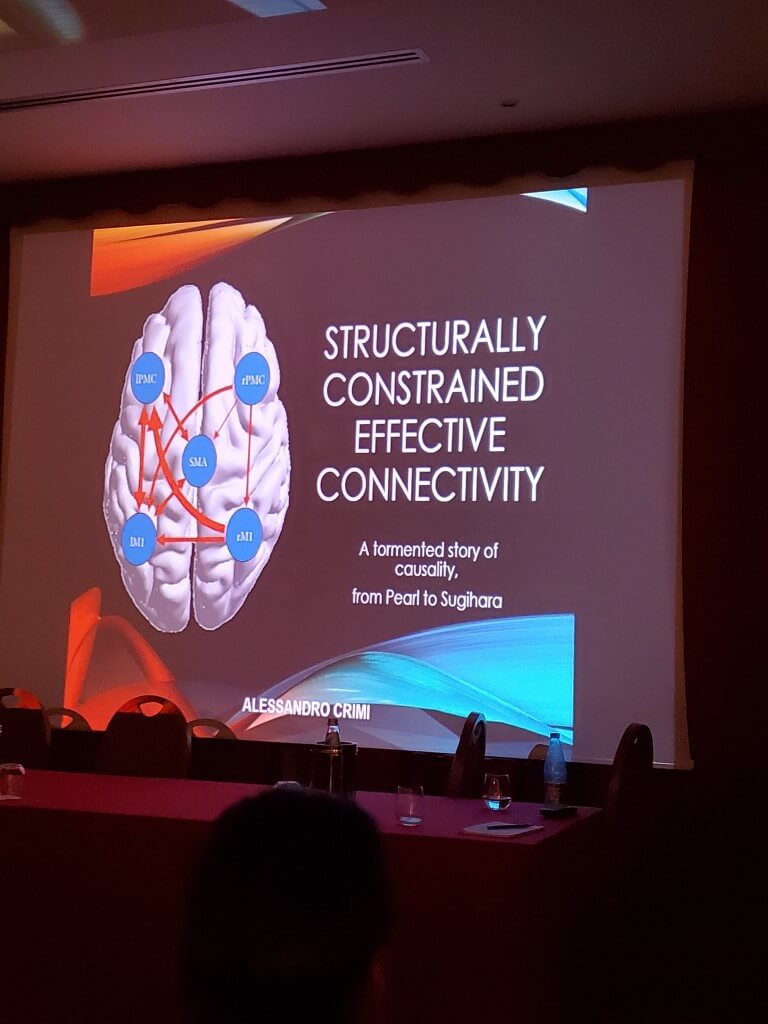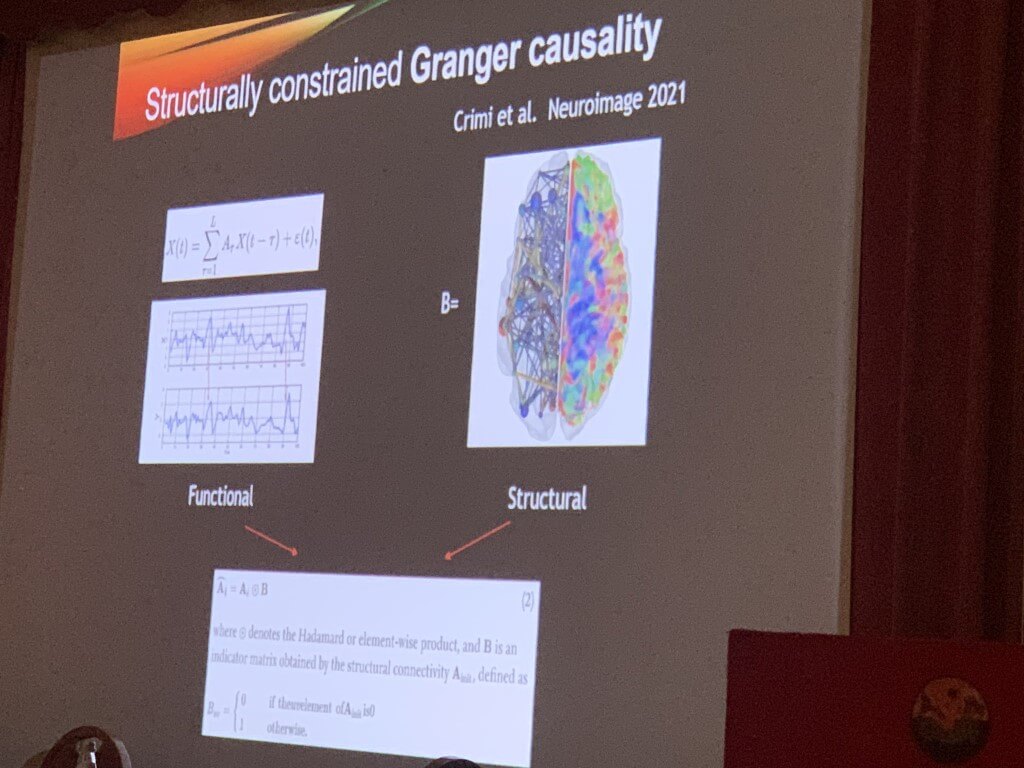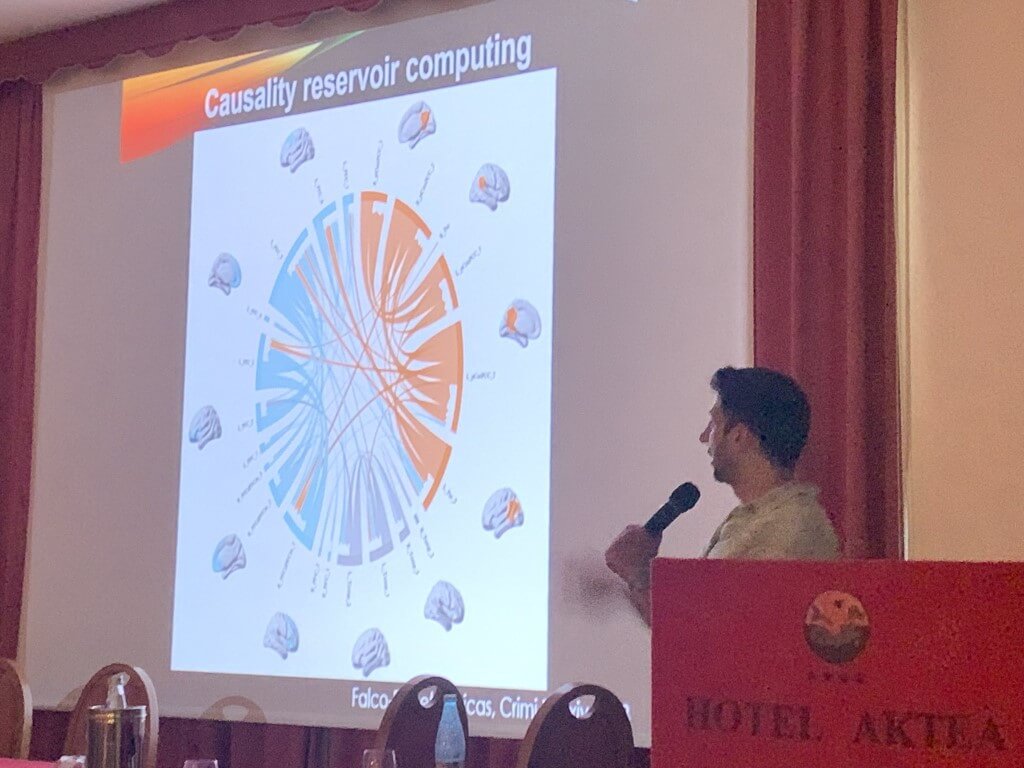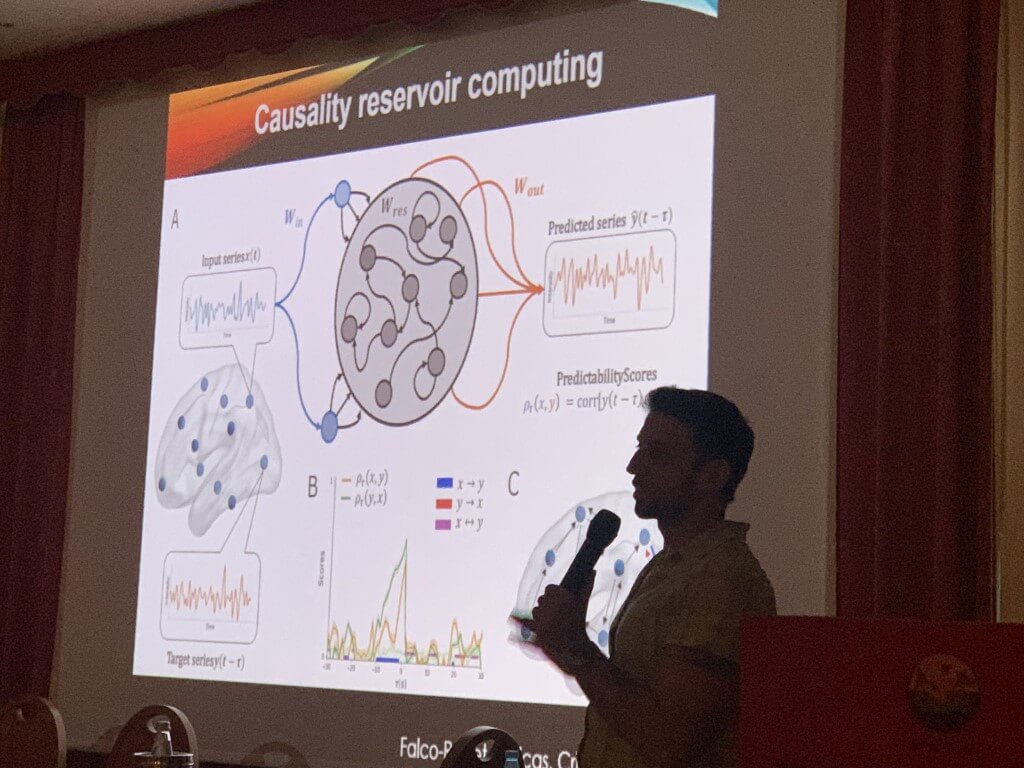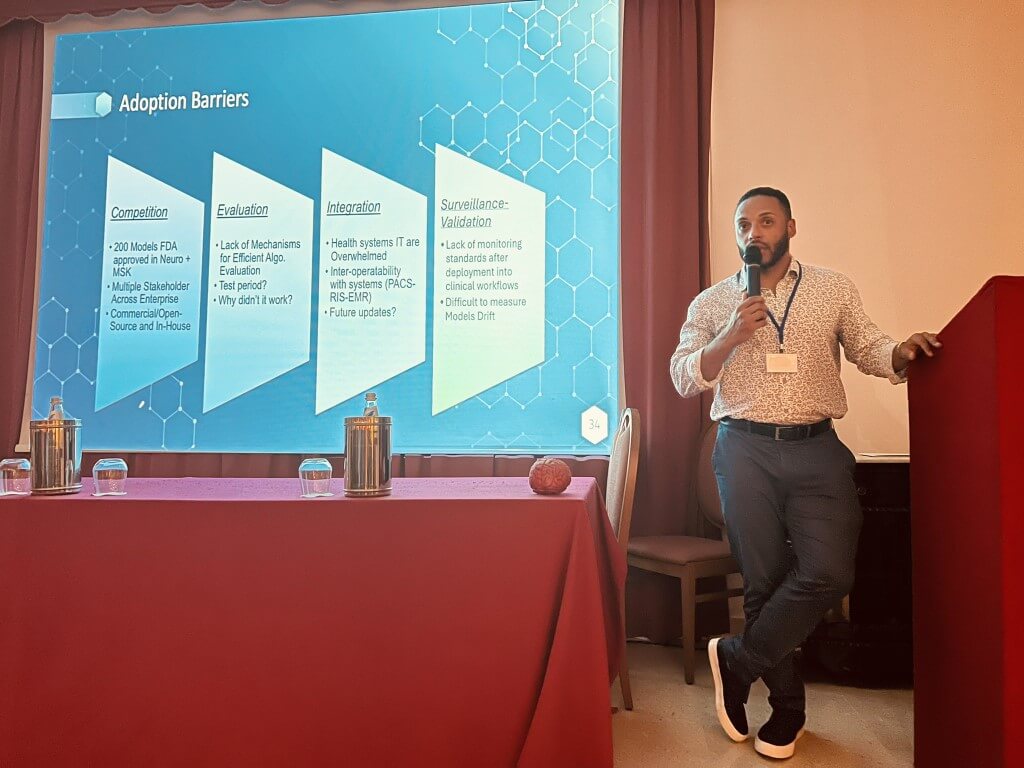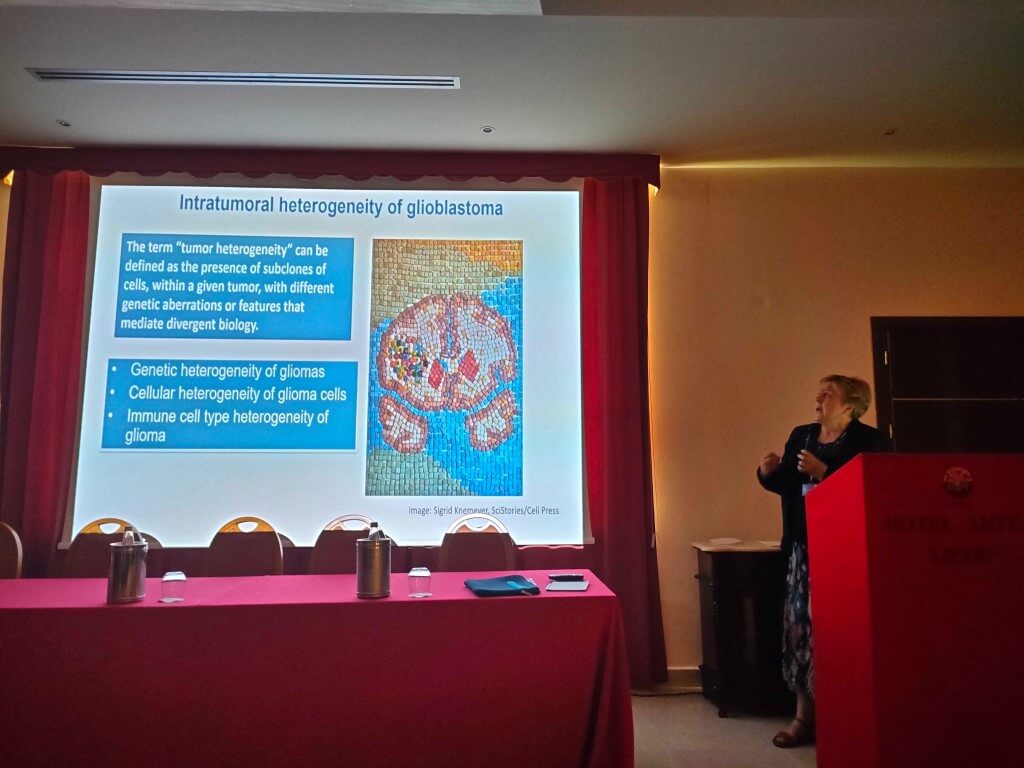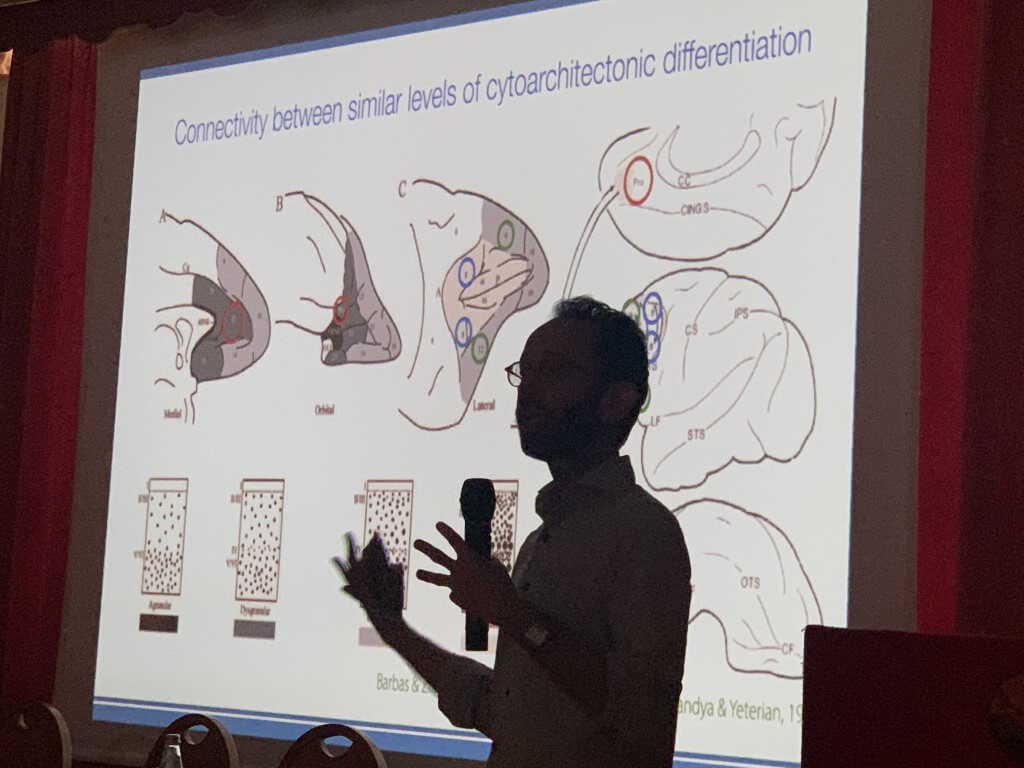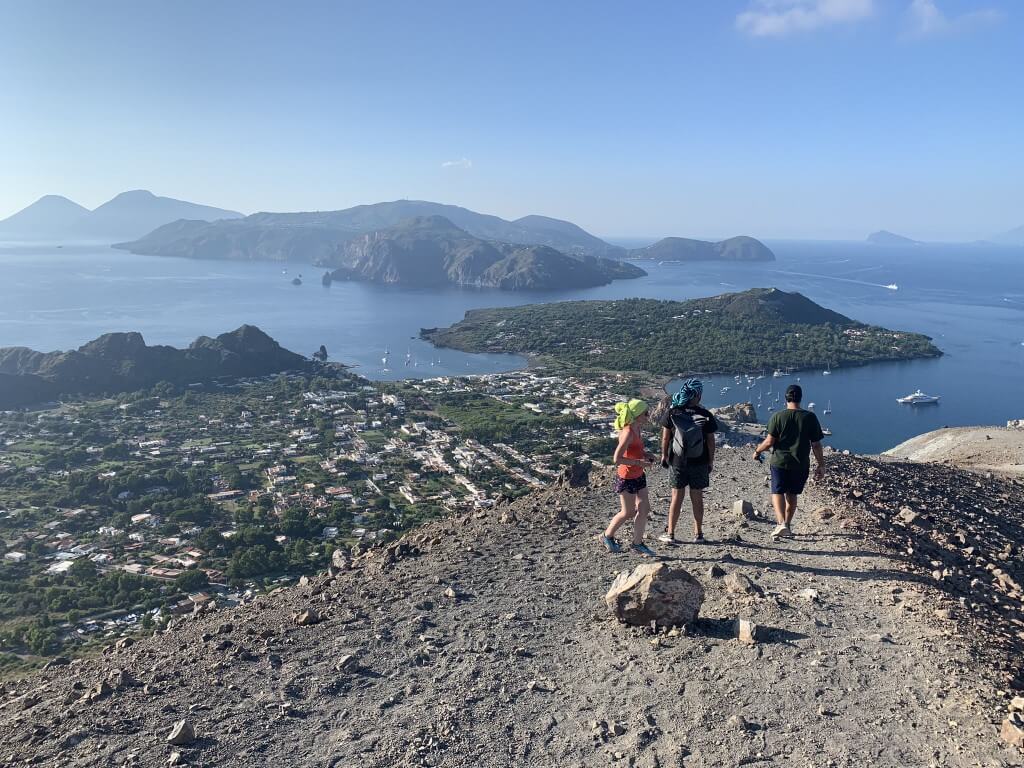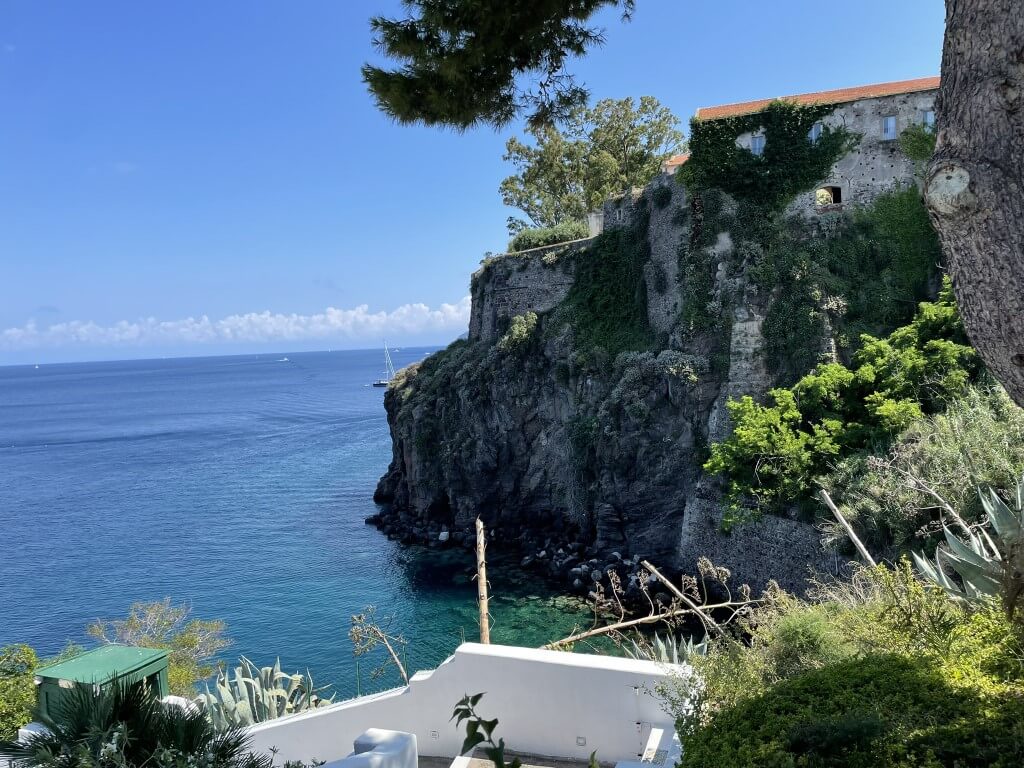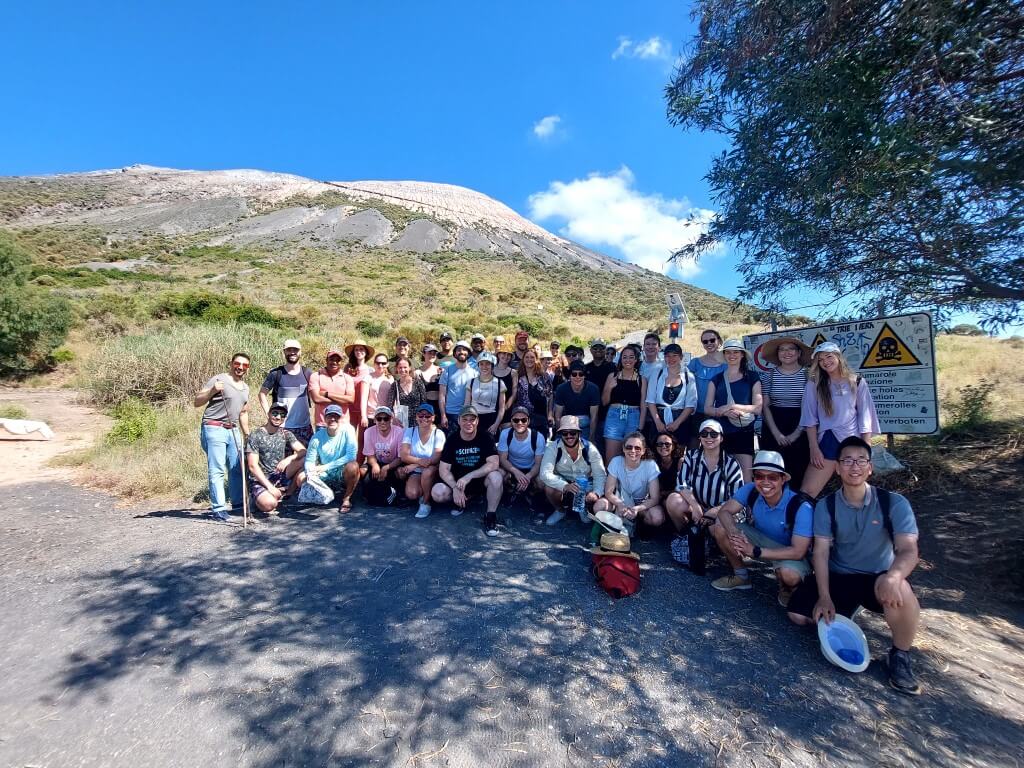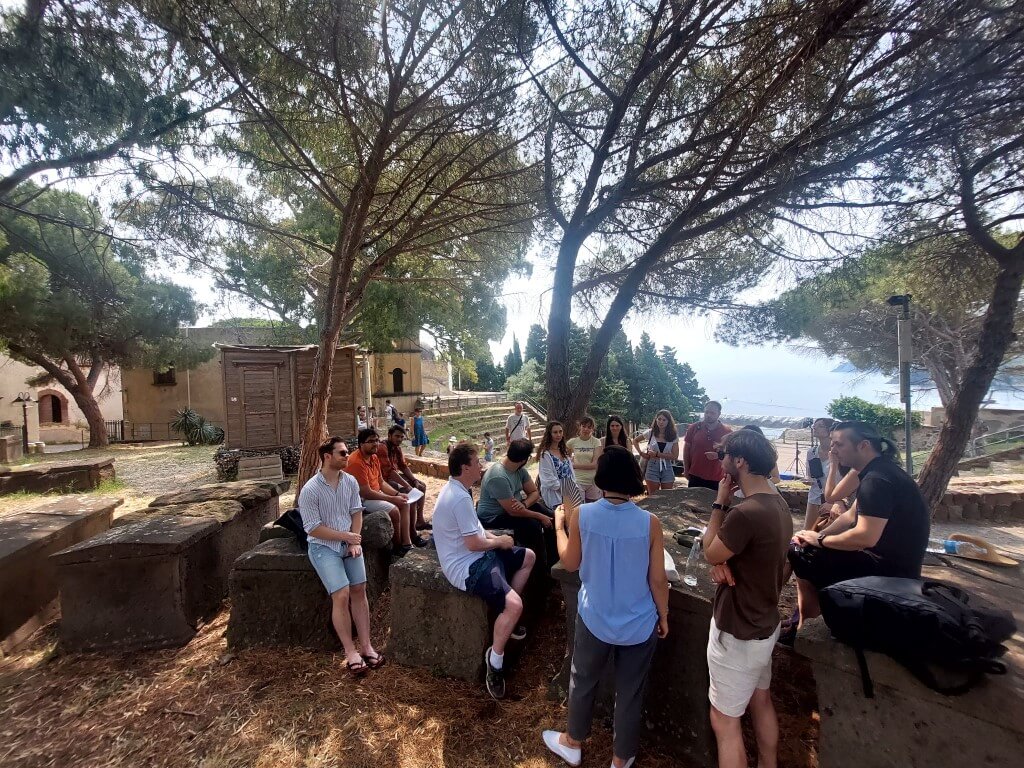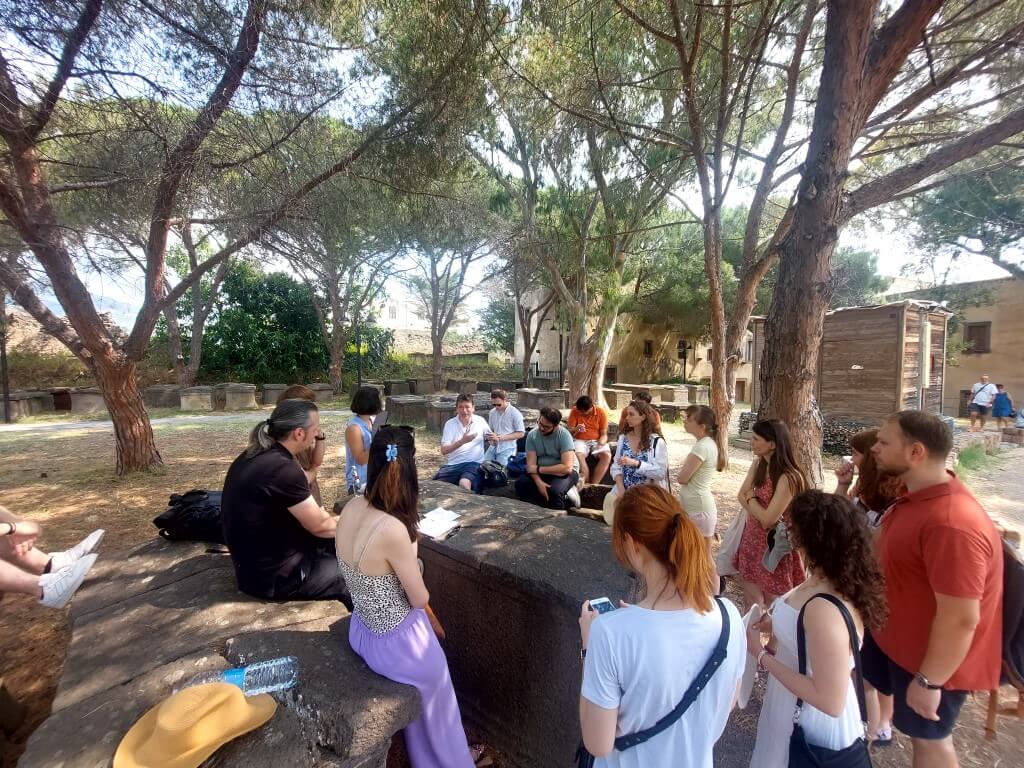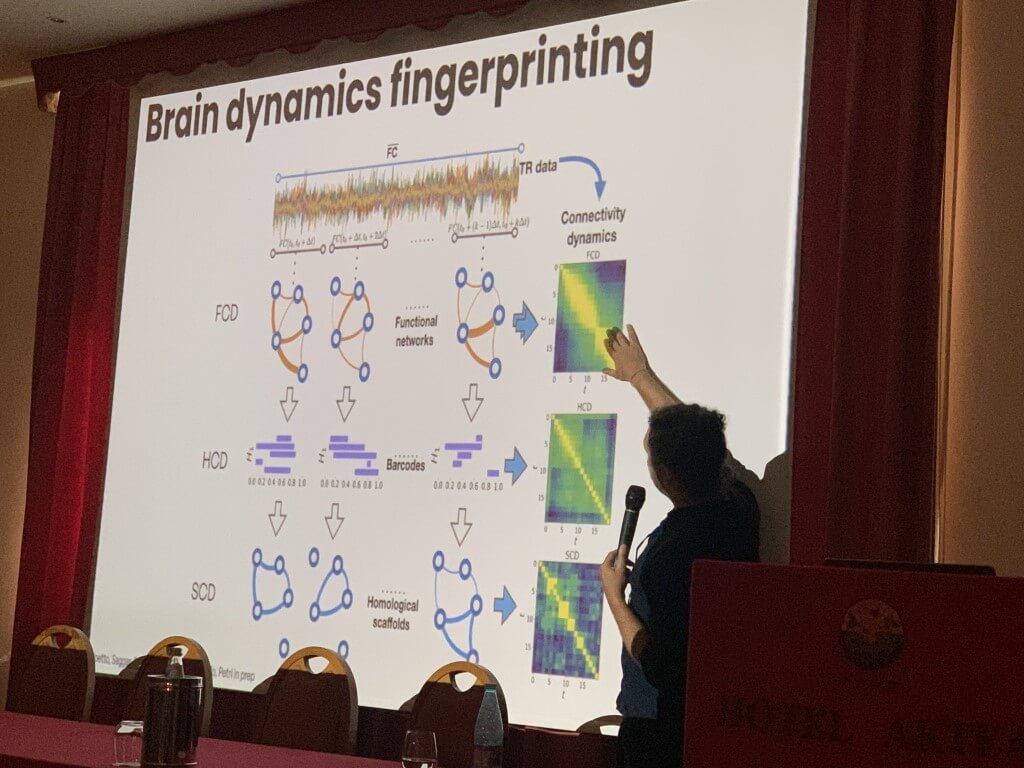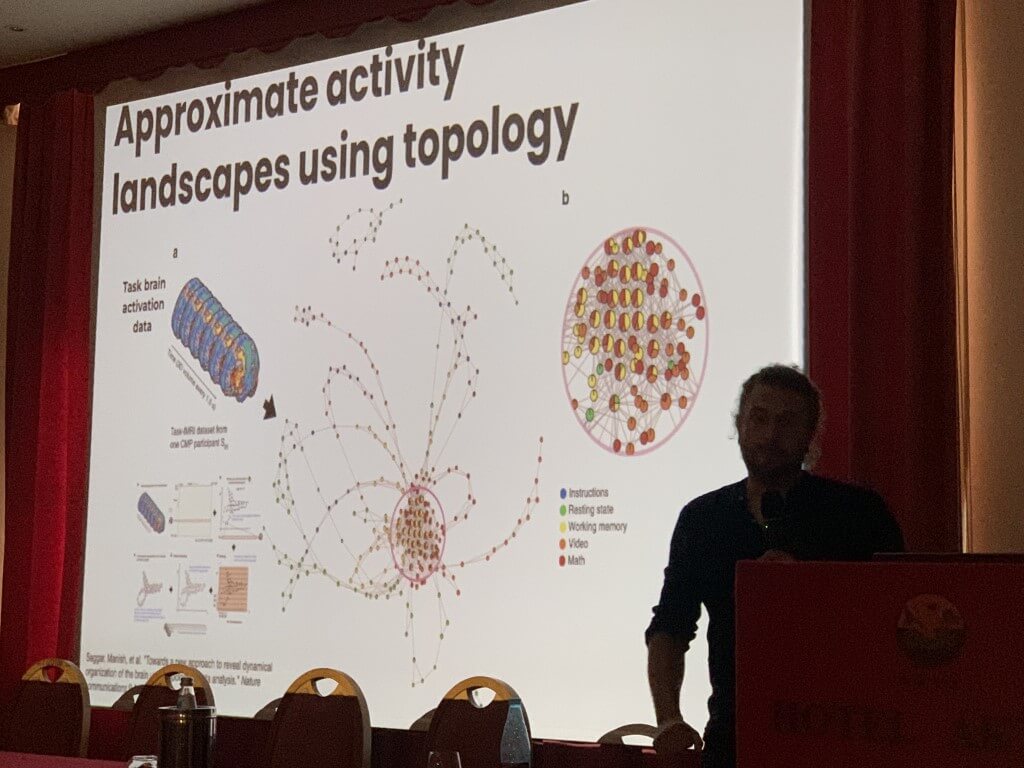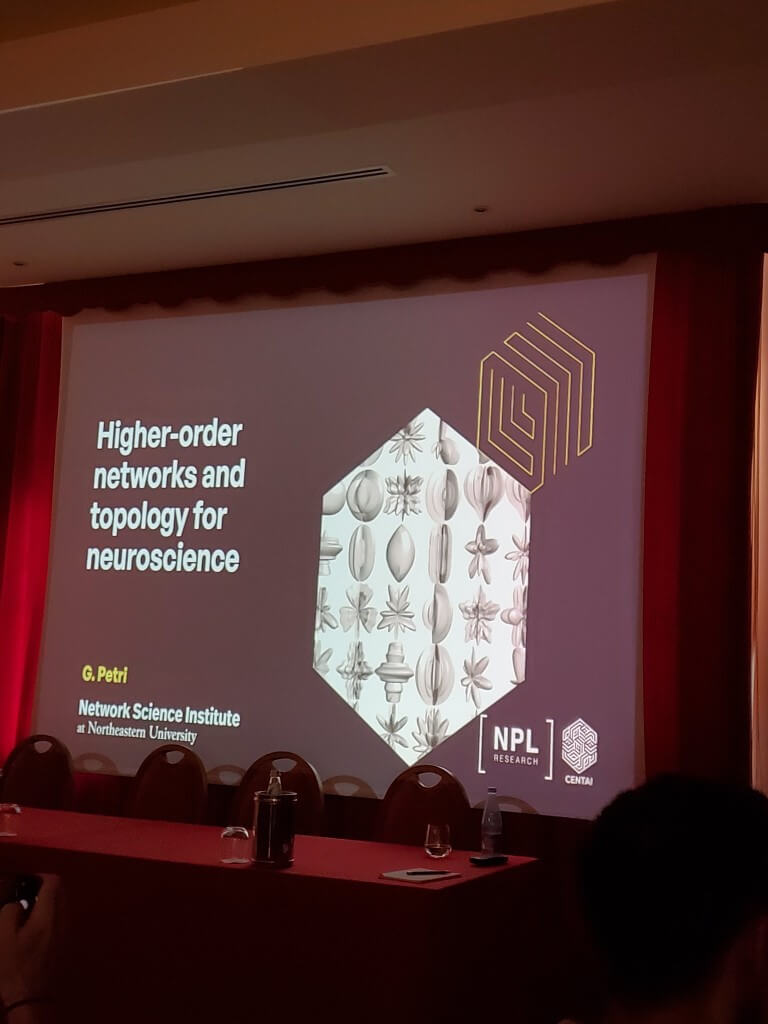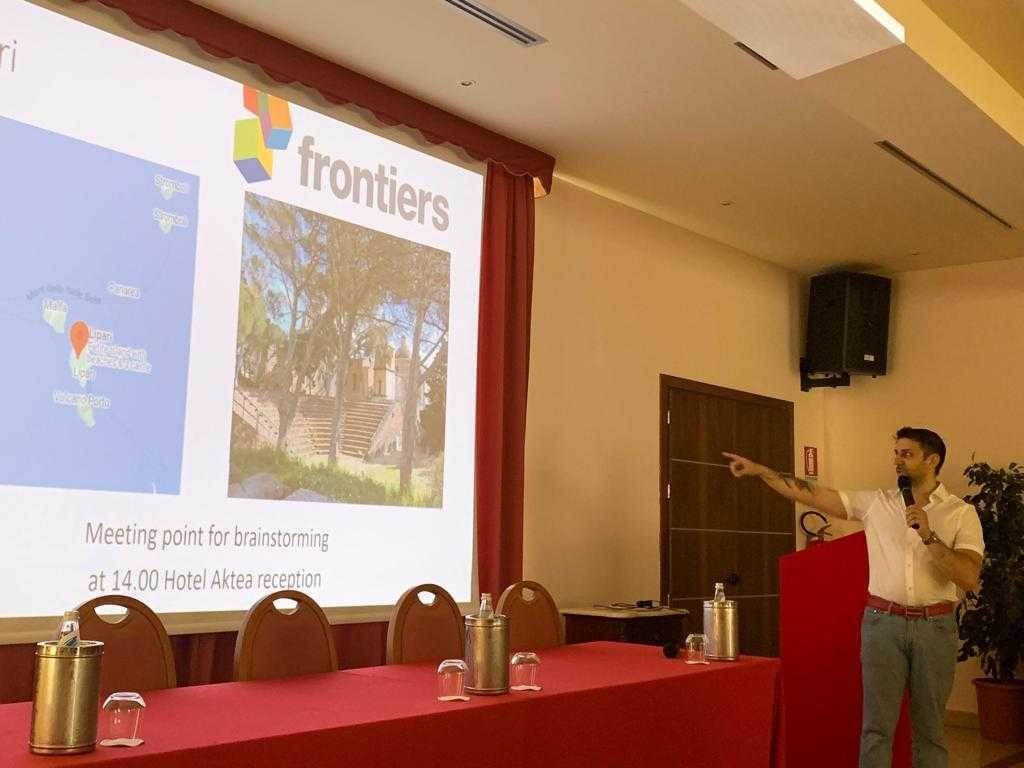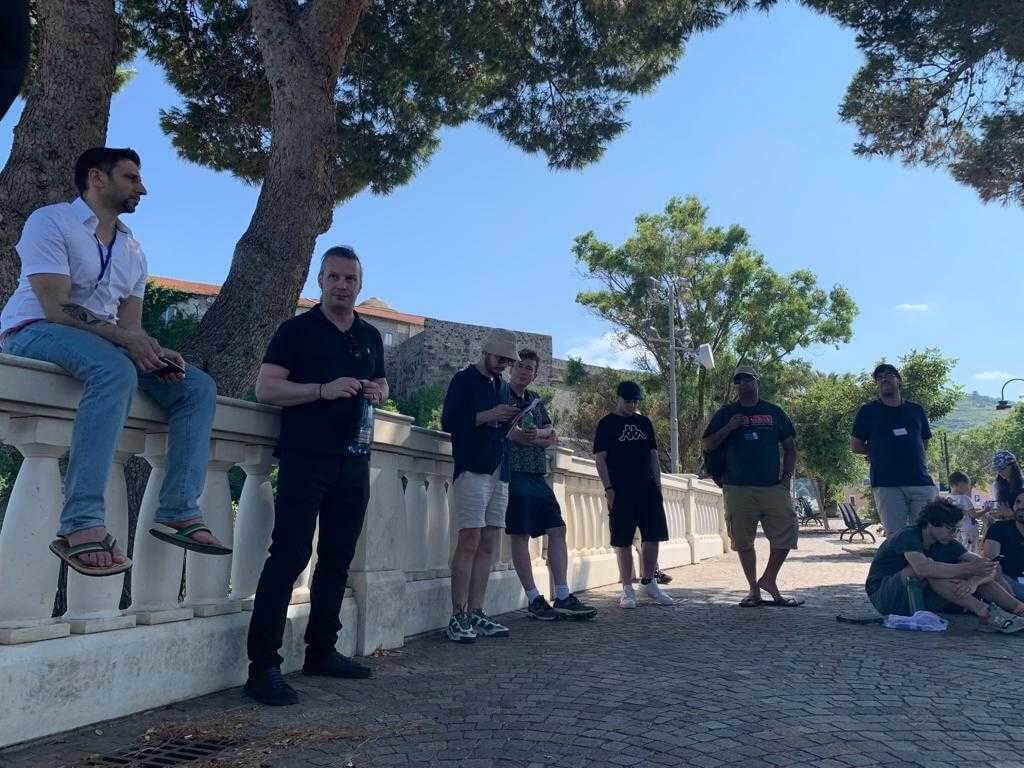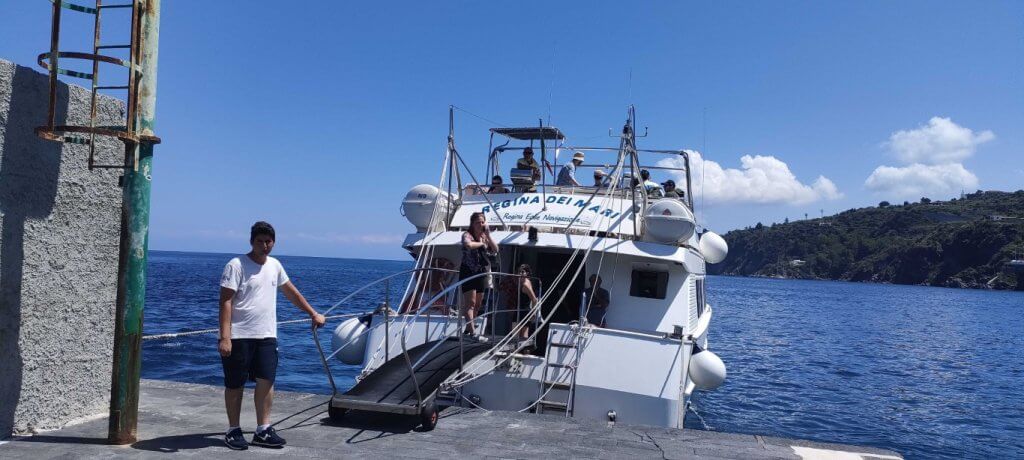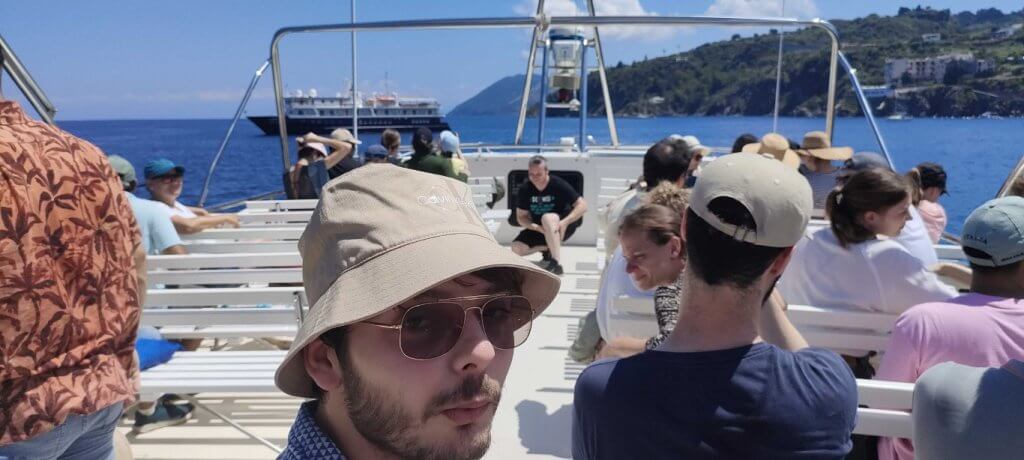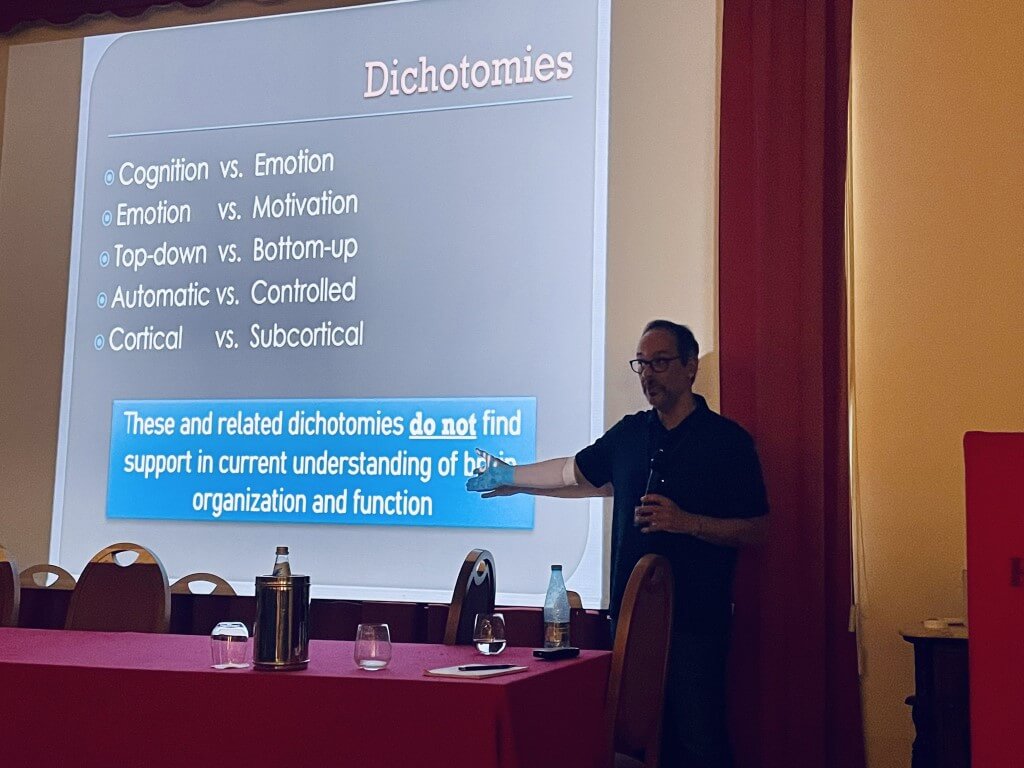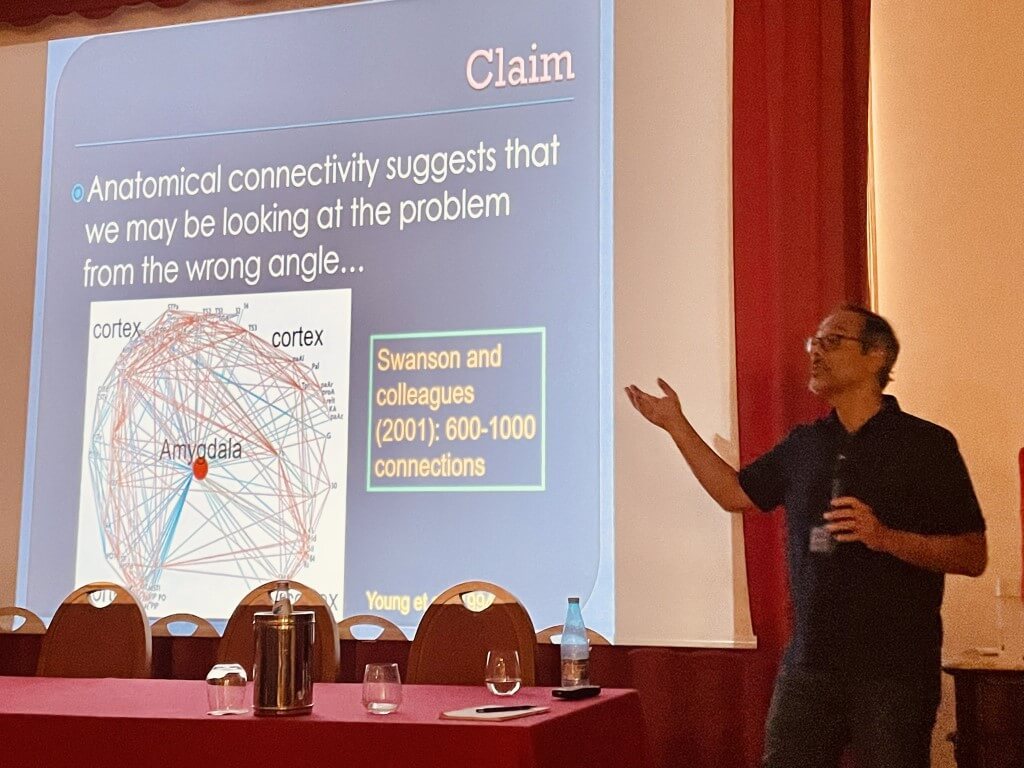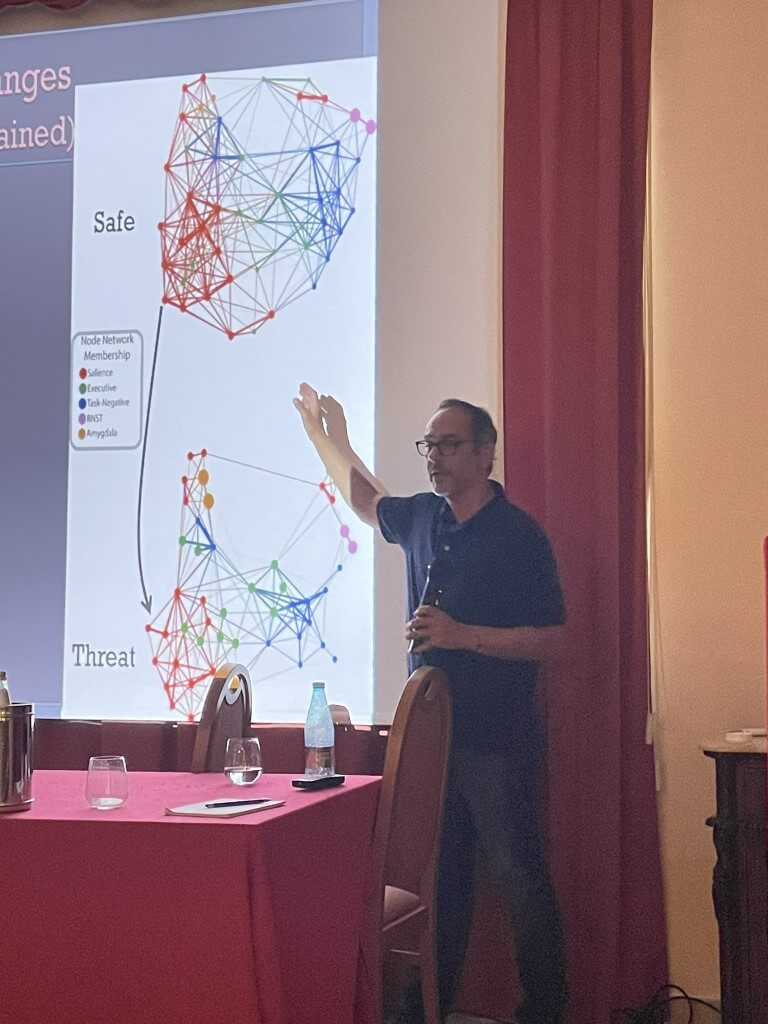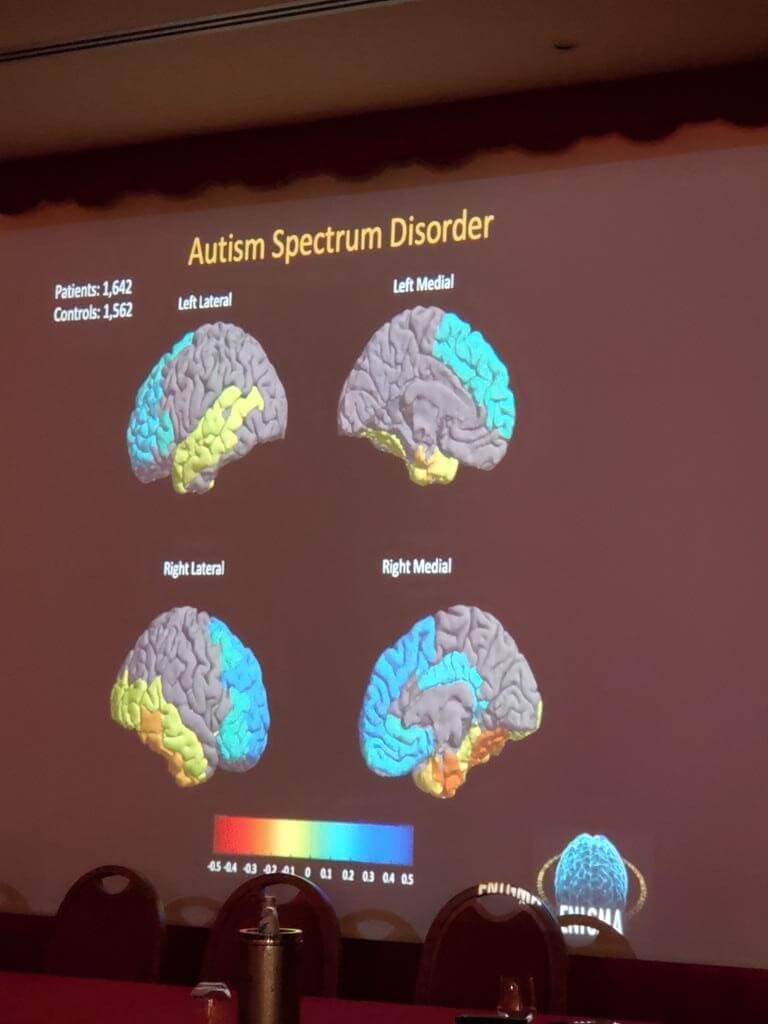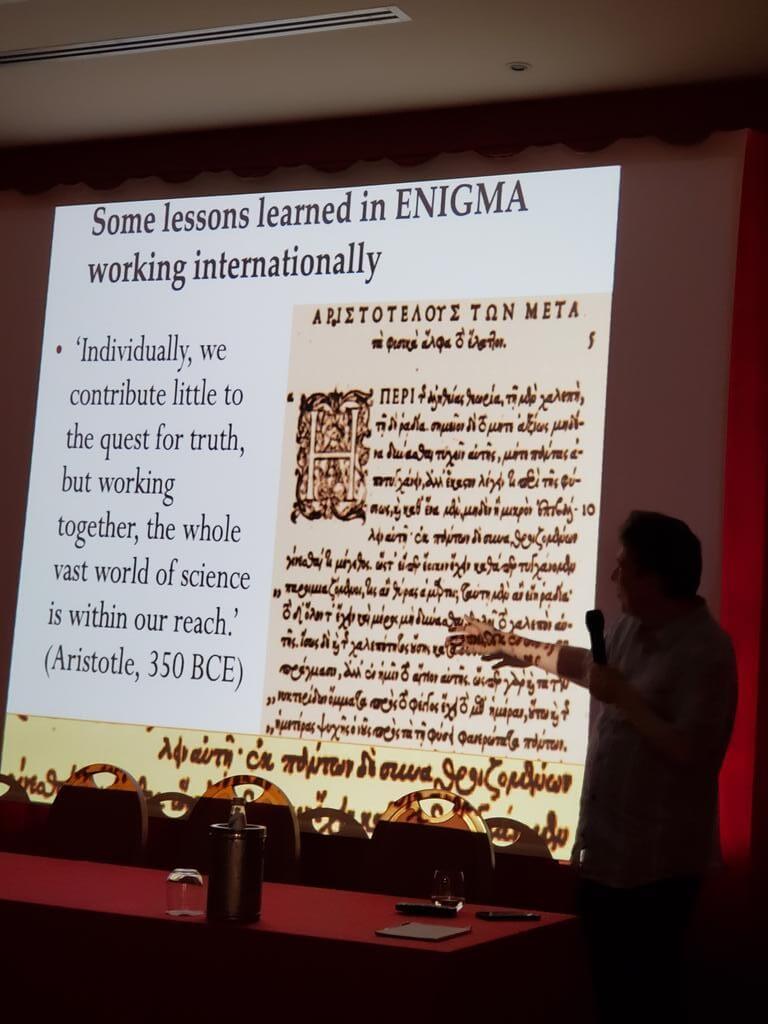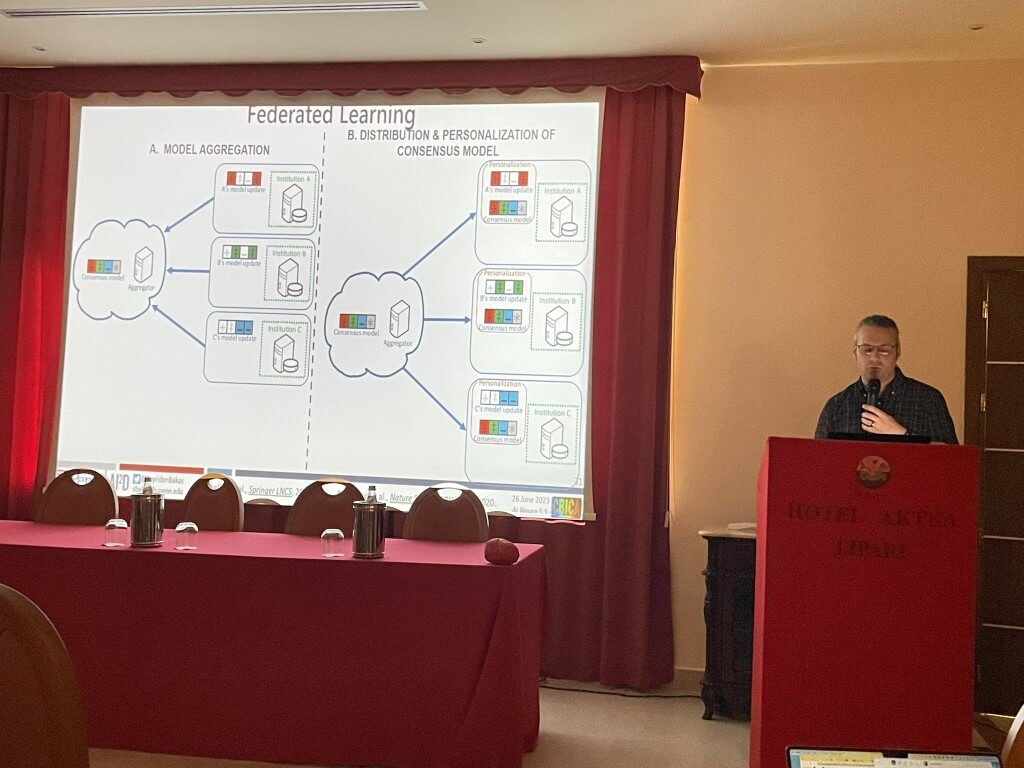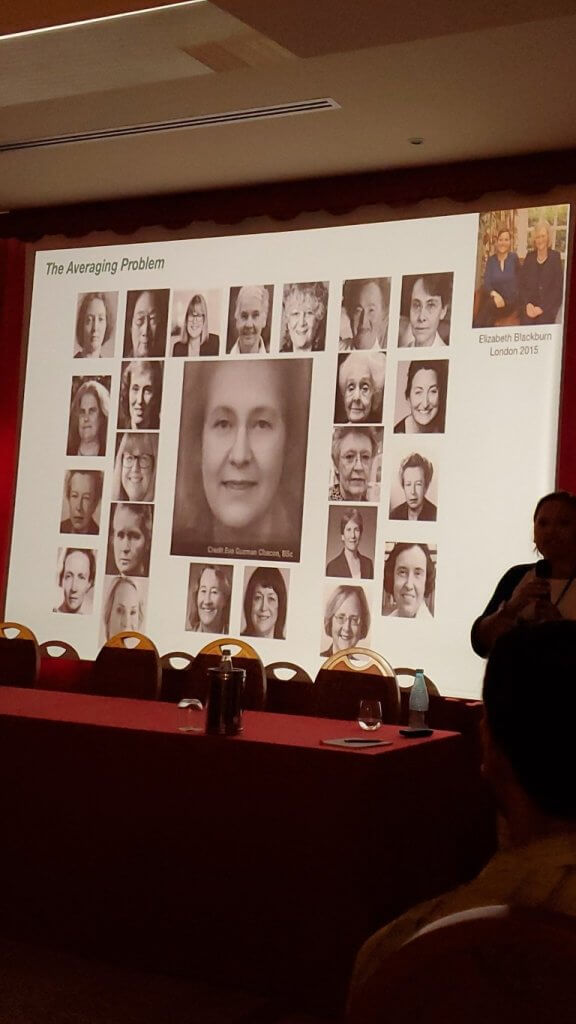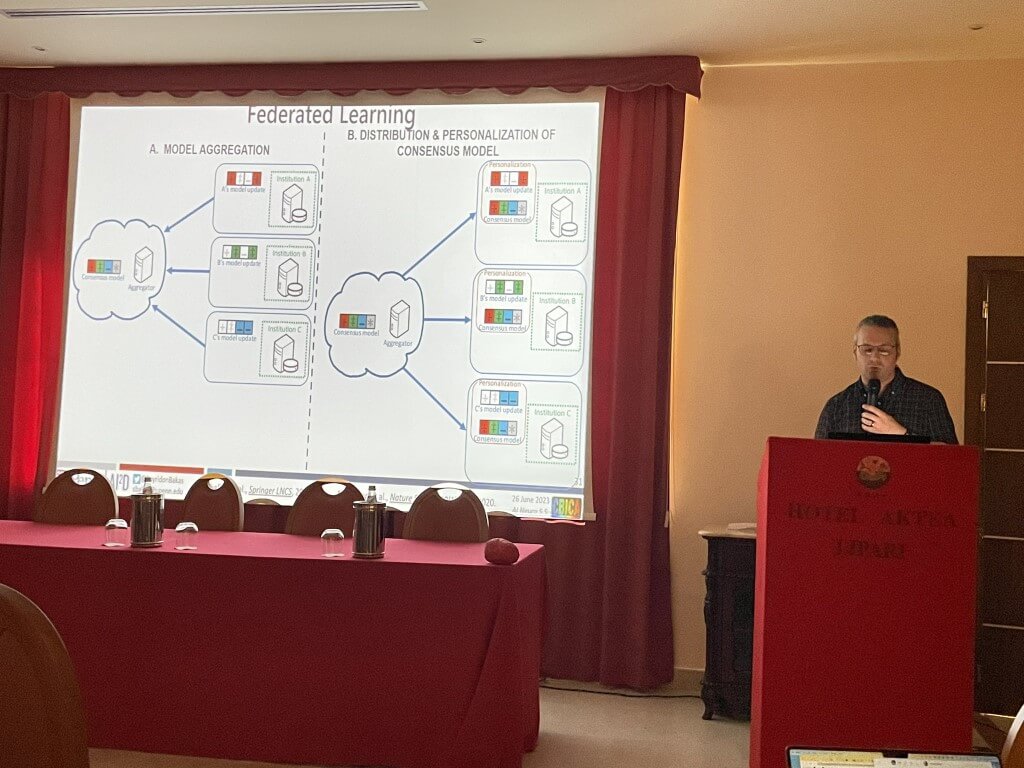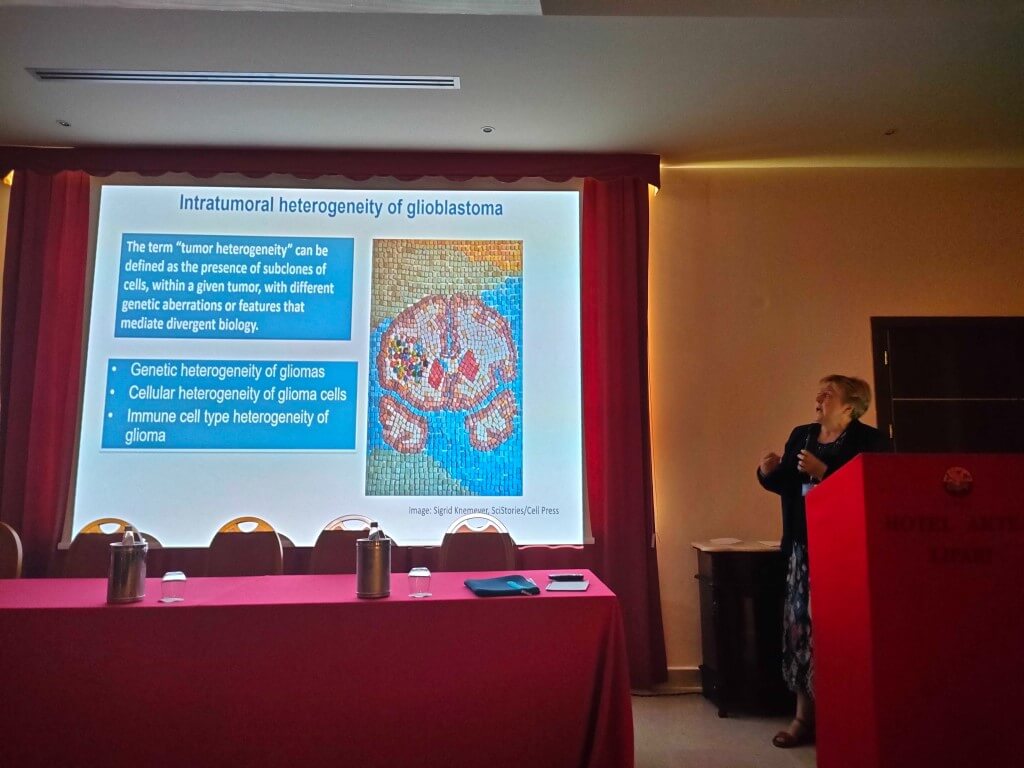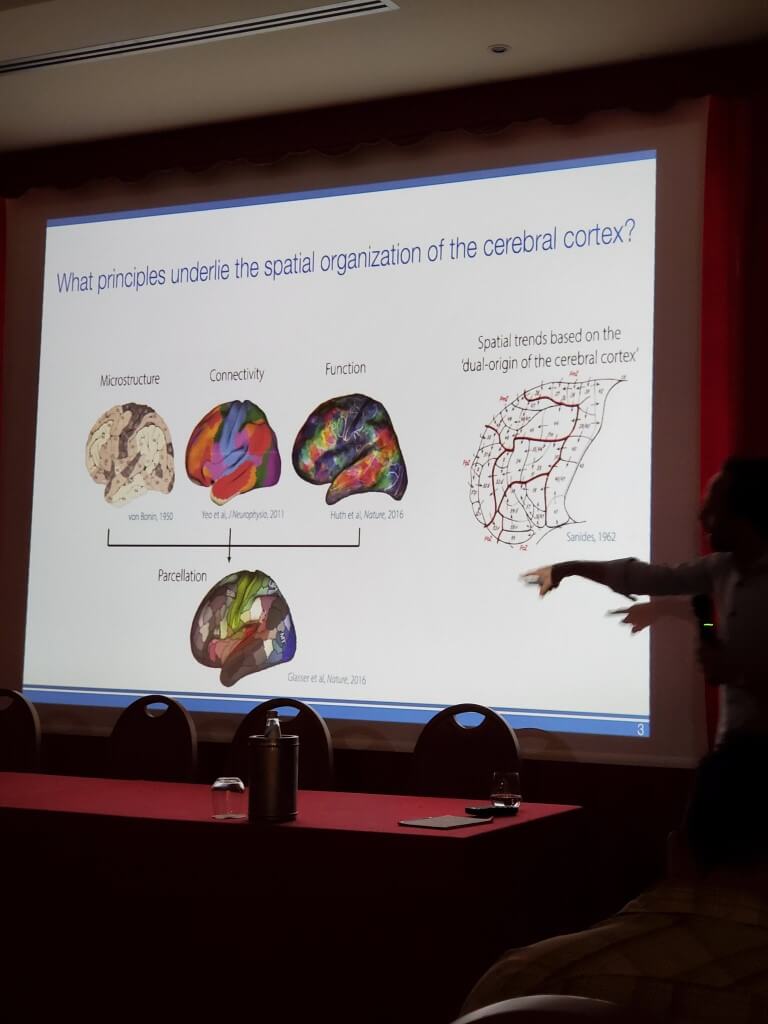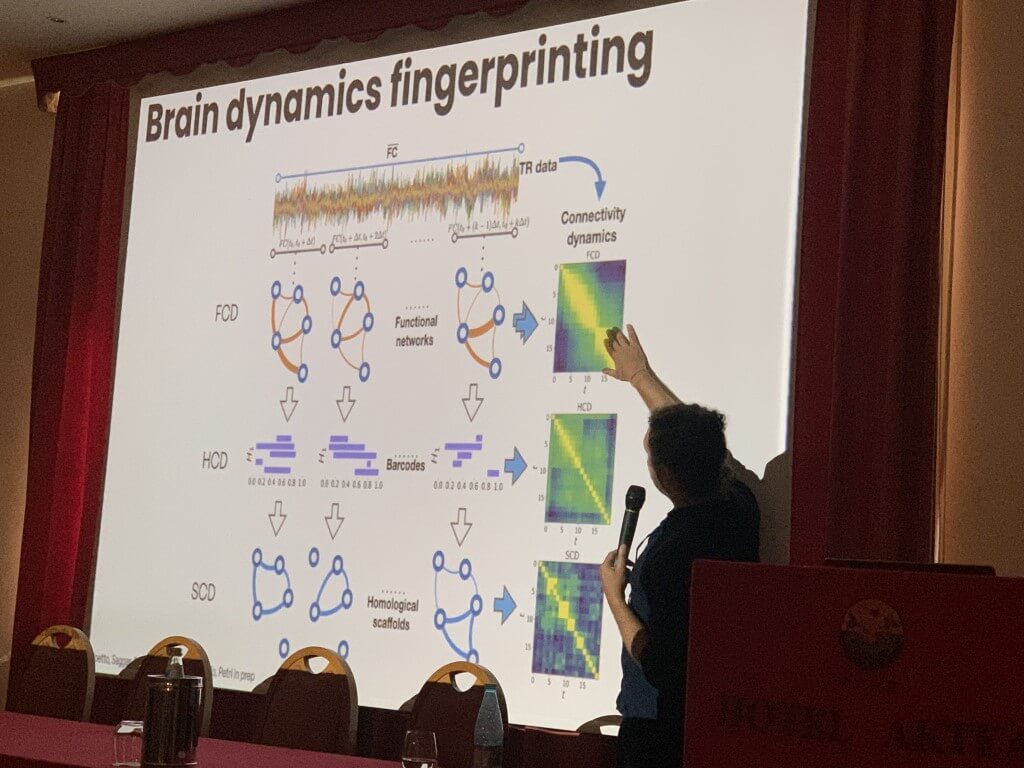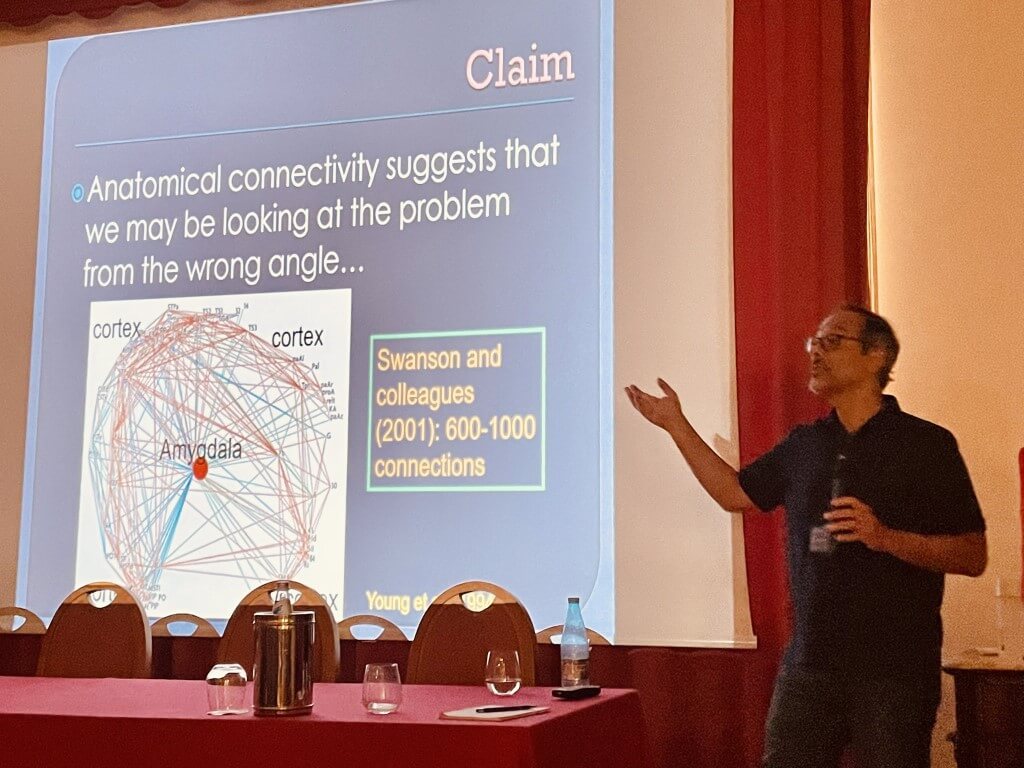The second edition of AI Neuro Summer School has just finished, and now we can say that almost a year of preparational work wasn’t in vain! All the goals we put for ourselves were successfully reached:
- we invited world-class researchers and the best teachers, and they willingly joined us to share their knowledge and expertise;
- amazing students from all over the world came to assure us that the future of science is in reliable hands;
- we had stunning lectures and discussions together;
- very generous partners decided to support our undertaking;
- Aeolian Islands didn’t let us down and provided us with breathtaking views and beautiful weather!
Talking about participants, this year we had almost 40 students, most of them Ph.D. students, but also some MS students, and Postdocs. Many European Universities were represented (for example, Amsterdam University, the University of Tor Vergata in Rome, the University of Bath, the University of Warsaw, the University of Zurich, and many others). We also had a representation from the Indian Institute of Technology, Bombay, and from the US (Olin Neuropsychiatry Research Centre, University of Pennsylvania, Yale University). The Summer School was international indeed!
The partners who supported us this year and made our program even richer, are:
- Frontiers, a publisher of peer-reviewed, open-access, scientific journals. The Summer School was related to a special issue of Frontiers in Neuroscience and we had 2 meetings, on the first and the last days of the School, allowing us to brainstorm and prepare preprints to be sent to Frontiers.
- Neosoma Inc., a project with the mission to help clinicians by providing novel disease insights through innovative AI technology. On the second day of the School, we had a lecture by Aly H. Abayazeed, MD, a practicing Neuroradiologist and a Co-Founder and Chief Medical Officer at Neosoma.
It goes without saying that we started every day with delicious coffee (Italian of course) and poster sessions, where our participants presented their projects and got professional feedback. Then began the lectures with exceptional people, the world-class specialists in brain research, computational medicine, neuroradiology, and neuroscience who made the AI Neuro Summer School 2023 so absorbing.
The first day of the Summer School (25th June)
The first lecturer was Dr. Gael Varoquaux, a research director at Inria (French Computer Science National research) and the creator of the scikit-learn library. Although he couldn’t be physically present, he delivered a highly engaging and mind-provoking lecture. Dr. Varoquaux focused on the challenges of using machine learning models in neuroscience and shed light on the emergence of scientific knowledge from data. He discussed the shift in scientific approaches, highlighting the importance of formally defining problems and designing experiments to validate hypotheses, unlike in the past where models were gradually refined over time. During his lecture, Dr. Varoquaux emphasized the significance of looking into the output of machine learning models themselves and placing trust in the distilled knowledge contained in the model’s learned parameters. He advocated for a paradigm shift where the measure of model validity should be based on its generalizability rather than its interpretability. His expertise as the creator of the scikit-learn library made this discussion even deeper and left a lasting impact on the summer school’s participants.
The rest of the day was spent at the Necropolis of Lipari, where participants brainstormed different neuro topics, inspired by the historical charm of the antique place.
The second day (26th June)
On the second day, there were six fascinating lectures. The day started with an enlightening presentation by Prof. Susan Short from the University of Leeds, focusing on the field of neuro-oncology. Prof. Short emphasized the complexity of neuro-oncology, highlighting the challenges in selecting appropriate treatments. She discussed how the field has neglected the importance of the “patient experiment,” particularly the significance of window studies. Furthermore, Prof. Short discussed the evolving landscape of oncology, with the availability of a growing number of agents. She highlighted the relevance of genomic characterization, which is becoming increasingly important in understanding and treating neuro-oncological conditions. Prof. Short’s talk was of immense value to participants, as they themselves acknowledged.
Dr. Andras Jakab from the University of Zürich and University Children’s Hospital in Zürich, delivered an insightful presentation on AI and its application in imaging the developing brain. In his lecture, Dr. Jakab emphasized the transformative role of AI in the field of brain development studies. He highlighted that AI enables larger-scale quantitative analysis of imaging data, facilitating a more comprehensive understanding of brain development processes. Additionally, Dr. Jakab discussed how AI techniques can be leveraged for brain morphology quantification, age estimation, and lesion detection. These advancements contribute to improved diagnostic capabilities and treatment planning in various neurological conditions. Moreover, Dr. Jakab explored the applications of AI in computer vision specifically. He highlighted how AI enables image correction, segmentation, synthesis, and interpretation, enhancing the accuracy and reliability of imaging techniques. Overall, Dr. Jakab’s lecture shed light on the immense potential of AI in the study of brain development and its wide-ranging applications in imaging techniques. His insights provided valuable knowledge and sparked further interest in the intersection of AI and neuroscience.
Dr. Lee A Cooper, the Director of the Institute for Artificial Intelligence in Medicine at Northwestern University, delivered an insightful lecture on the examination of highly deadly diffusion gliomas, providing our students with a profound understanding of the subject. He highlighted that the origins of highly deadly diffusion gliomas are not yet fully understood in terms of molecular biology.
Dr. Cooper emphasized the importance of histology grading in classifying patients’ survival and mentioned that the World Health Organization (WHO) currently utilizes a complex tumor grading system based on both histologic and molecular criteria. Dr. Cooper presented two paradigms for histology analysis: the descriptive histology paradigm, which involves using computer vision to describe tissue through rational feature design, and the black box paradigm, which makes predictions solely from input images without explicit feature design. Furthermore, Dr. Cooper discussed the benefits of semantic segmentation in identifying histological patterns. The lecture provided a comprehensive overview of the challenges and advancements in histopathology image analysis for neuro-oncology.
Dr. Spyridon Bakas from the University of Pennsylvania, one of the organizers of the School, started the topic of Federated learning in solving problems of data scarcity in medicine. Dr. Bakas highlighted that incorporating Deep Learning solutions in real-world scenarios can be challenging, but Federated Learning (FL) provides a solution. FL involves a collaboration between several entities to contribute to the learning of the general model. This model training paradigm has several benefits, including the assurance of patient privacy since data does not leave the institution. FL also eliminates the need for data-sharing bureaucracy, encouraging collaboration and resulting in better models. Models trained on a single institution’s data may not generalize when applied to different data sources. However, FL’s multi-institutional setting addresses this issue. Additionally, FL benefits rare disease detection as having more data provides more samples.
Sarthak Pati, PhD Candidate at TUM continued the topics of Dr. Bakas presentation, saying that when introducing Deep Learning models to different hospitals, customized solutions are necessary. Luckily, there are open-source software options that facilitate multi-institutional collaboration. Sarthak, the creator of GaNDLF, has developed a framework that enables users to anonymize, augment, normalize, train, and post-process data without requiring specialized knowledge. The framework supports a variety of tasks, including regression, classification, and segmentation, through various network topologies. This valuable tool is now part of MLCommons and welcomes contributions. Sarthak has also introduced MedPerf, an open-source framework that benchmarks AI models to provide clinical efficacy, prioritize patient privacy, and mitigate legal and regulatory risks. The framework facilitates federated evaluation, securely distributing AI models to various facilities for evaluation. Additionally, the Center for Biomedical Image Computing and Analytics (CBICA) at the University of Pennsylvania, in collaboration with Intel Labs, Intel AI, and Intel Internet of Things Group, has developed and maintained FeTS. This user-friendly toolkit features a GUI for tumor segmentation, pre-trained segmentation models, and enables secure multi-institutional collaborations through federated learning.
Aly H. Abayazeed, MD, a practicing Neuroradiologist and Co-Founder/Chief Medical Officer at Neosoma, delivered an informative lecture on his start-up’s mission to design and deploy clinician-centric, A.I.-powered neurodiagnostic solutions. During the “From Lab to Bedside: An AI Story” lecture, Aly highlighted the pressing issues in healthcare and the crucial need for innovation. He emphasized the vast amount of medical knowledge being accumulated in modern times and the importance of effectively storing, analyzing, and utilizing this wealth of information. Furthermore, Aly addressed the barriers that his company and similar ventures face, even after receiving FDA clearance. He discussed challenges such as competition, data privacy concerns, establishing trust, and the need for continuous model verification. Aly also shared valuable advice, emphasizing the significance of defining an exit strategy early on. He discussed the challenges of IPO if the market size is below 1 billion dollars, suggesting that focusing on a small domain can increase the chances of being acquired. Aly’s expertise and advice made a huge impact on our understanding of bridging the gap between cutting-edge technology and patient care.
The third day (27th June)
The third day was more relaxed as we took a boat trip to Vulcano Island. But the first things first, the day started with the lectures! Prof. Bożena Kamińska – the head of the Laboratory of Molecular Neurobiology at the Nencki Institute of Experimental Biology of the Polish Academy of Science, delivered an informative lecture on brain tumor heterogeneity and plasticity, shedding light on the alarming characteristics of glioma. During the “Brain tumor heterogeneity and plasticity: the challenge to catch a moving target” lecture, Prof. Kamińska emphasized the highly heterogeneous and genetically diverse nature of glioma, which contributes to its deadly nature. Furthermore, she discussed the prevalence of spatial heterogeneity within glioma tumors, emphasizing that glioma rapidly changes, particularly when surgery is incomplete. This results in regrowth in different locations and depths within the brain, leading to poor survival rates. Her insights provided valuable knowledge regarding the challenges in treating glioma and the potential limitations of certain therapies, contributing to our understanding of brain tumor biology.
Dr. Norbert Galldiks – a professor of Neurology at the University Hospital Cologne and Research Center Juelich, expanded on the topic of glioma during his engaging lecture. He discussed the significant advantages of using positron emission tomography (PET) for examining and monitoring tumors. Dr. Galldiks highlighted the versatility of PET, as it can be used at any stage of the disease for various measurements. He specifically pointed out that gliomas often show no contrast enhancement in MRI scans, but PET can identify biopsy or treatment targets even in the absence of contrast. Dr. Galldiks emphasized that PET and MRI yield considerable differences in tumor burden, and both modalities should be used in the diagnostic process. He further highlighted that PET could provide diagnostic accuracy surpassing that of MRI results. It is worth saying that despite the online format, Dr. Galldiks’ presentation was highly impactful and provided valuable insights into the applications of PET in neuro-oncology.
The fourth day (28th June)
On this day we again had six informative lectures – it was probably the most intensive AI Neuro Summer School’s day, but the neuroscience impute was enormous!
Dr. Daniel S. Margulies – the research director of the French National Centre for Scientific Research, presented a fascinating lecture entitled “Gradients in Neuroscience and Cognition.” He discussed his work in defining subregions within complex cortical areas, conducting cross-species comparative neuroanatomical studies, and linking variation in these networks to phenotypic differences across individuals. Dr. Margulies highlighted the goal of distilling knowledge about the connectome and brain regions from data. He discussed the characterization of connectivity space using manifold learning techniques, which can help determine the function of a given region. Furthermore, Dr. Margulies emphasized that functions within the brain can be situated along principal gradients, which provide a framework for understanding the organization and functional relationships between different brain regions. Dr. Margulies also discussed how visible connectivity changes as we age, highlighting the dynamic nature of the brain and the potential impact on cognitive processes and phenotypic variation. Dr. Margulies’ insights into manifold learning, principal gradients, and the changes in connectivity throughout aging deepened our understanding of the complex nature of the brain and its impact on cognition.
Dr. Paul Thompson, a professor in the Department of Neurology and Biomedical Engineering Program at UCLA, delivered an enlightening lecture on the Enigma project, which focuses on understanding the impact of 33 major diseases on the brain. During his lecture titled “ENIGMA, AI, & Global Neuroscience: Neuroimaging & Genetics of 30 Brain Diseases in 100,000 People from 45 Countries,” Dr. Thompson shared key insights about the Enigma project which focuses on exploring problems related to genetics, neuroimaging, and histology. He emphasized that the project has gathered and extensively worked with over 100,000 datasets from around the world. Dr. Thompson highlighted the significant role of AI and machine learning in analyzing such large datasets, which the Enigma project extensively utilizes. He discussed how these advanced technologies provide tremendous assistance in analyzing the vast amount of data collected. Furthermore, Dr. Thompson addressed the challenges faced by projects like Enigma, including harmonization of data, denoising techniques, and biases that may arise during analysis. He emphasized the importance of addressing these challenges to ensure accurate and meaningful results.
Dr. Stephanie J Forkel – a principal investigator and research group leader at the Donders Institute in Nijmegen, delivered an intriguing lecture on neurovariability, with a particular focus on language as a key property of the brain. During the “Neurovariability” lecture, Dr. Forkel addressed the challenges posed by averaging in constructing language regions’ connectome and mapping. Dr. Forkel discussed the importance of accounting for variability in the connectome to predict language recovery in stroke patients. She emphasized that language, like other properties of the brain, emerges from interconnected groups of neurons. Her insights contributed to our understanding of the complexity and interconnected nature of the brain, particularly regarding the emergence of language.
Dr. Giovanni Petri, a professor at the Network Science Institute at Northeastern University, provided valuable insights into complex systems in neuroscience during his lecture. Dr. Petri emphasized how topology allows for the description of complex relationships in graphs, providing a convenient modeling approach for gene backbones in various regions of the brain. Furthermore, Dr. Petri highlighted the significance of topology in estimating and visualizing spatial reorganization for specific brain activities. He demonstrated how topology plays a crucial role in EEG and fMRI studies, enabling researchers to gain a deeper understanding of the brain’s activity landscape and the spatial changes that occur during certain activities.
Prof. Luiz Pessoa, the Director of the Maryland Neuroimaging Centre, delivered an insightful lecture entitled “The Entangled Brain: how emotion and cognition are integrated in the brain.” Prof. Pessoa explained that affective content reduces the frequency of blinks, indicating an impact of emotions on basic physiological responses. He also emphasized that emotions are processed with a kind of priority, even without conscious attention being involved. Prof. Pessoa further pointed out that motivation reduces decision conflicts. He presented evidence of increased functional connectivity between regions involved in attention and reward-seeking when an expected reward is present. Furthermore, Prof. Pessoa mentioned the use of community detection algorithms, which revealed significant changes in network patterns when rewards were expected. He highlighted that the anticipation of reward increases integration across different communities in the brain.
Dr. Alex Crimi, MBA – the leader of the Computer Vision team at Sano and one of the organizers of the Summer School, delivered an engaging lecture entitled “Brain Causality.” He started by highlighting the distinction between correlation and causality by using the example of Switzerland’s Nobel Prize winners and their consumption of chocolate, illustrating that correlation does not imply causality. Dr. Crimi also discussed the three major connectivity types: structural, functional, and effective connectivity. These types play significant roles in understanding the relationships within complex systems. He addressed the controversial nature of causality, noting that some argue it only shows temporal causality or correlations. Dr. Crimi highlighted the challenges associated with using Granger causality for multivariate correlations and discussed how latent variables could potentially be the cause of observed signals. Furthermore, he introduced the concept of structurally constrained Granger causality as a method to improve conclusions drawn from data analysis. He also mentioned Sugihara causality, which suggests that complex systems are often attracted by a Lorentz attractor.
The fifth day (29th June)
It was the last day of our school, time to draw conclusions, to share contacts for future work and it was time for the social event on the water that followed by dinner on the boat!
The last but not least, the whole event came true only thanks to the energy, creativity, and organizational talents of the Sano Science team.
We hope we inspired you to come to the next AI Neuro Summer School, see you in a year!


